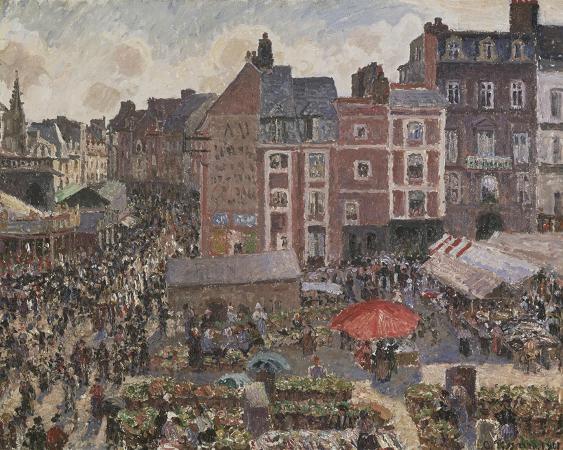Dieppe. Dieppe is a coastal commune in the Seine-Maritime department in the Normandy region of northern France. A port on the English Channel, at the mouth of the river Arques, famous for its scallops, and with a regular ferry service to Newhaven in England, Dieppe also has a popular pebbled beach, a 15th-century castle and the churches of Saint-Jacques and Saint-Remi. The mouth of the river Scie lies at Hautot-sur-Mer, directly to the west of Dieppe. The inhabitants of the town of Dieppe are called Dieppois and Dieppoise in French. Dieppe belongs to the Pays de Caux, lying along the Alabaster Coast in the region of Normandy. It is located on the Channel coast, north of Rouen at the mouth of the river Arques and lies east of the mouth of the river Scie. Mentioned as Deppae in 1015–1029, Dieppa in 1030, then in the 12th century: Deppa, Deupa and Diopa. From Old English dēop or Old Norse djúpr deep, same meaning. The stream running through Dieppe was called Tella in Merovingian and Carolingian documents, before being called Dieppe in the 10th century. The name has stuck to the town, although the name of the stream changed again, to Béthune. First recorded as a small fishing settlement in 1030, Dieppe was an important prize fought over during the Hundred Years' War. Dieppe housed the most advanced French school of cartography in the 16th century. Two of France's best navigators, Michel le Vasseur and his brother Thomas le Vasseur, lived in Dieppe when they were recruited to join the expedition of René Goulaine de Laudonnière which departed Le Havre for Florida on April 20, 1564. The expedition resulted in the construction of Fort Caroline, the first French colony in the New World. Another expedition two years before where Goulaine de Laudonnière was under command of Jean Ribault, a local Huguenot captain, had resulted in the foundation of Charlesfort, now in South Carolina. Dieppe was the premier port of the kingdom in the 17th century. Also, it is important to know that after King Edward VI died, putting an end to a Protestant country in England on July 6th 1553, Knox left England to evade the Catholic-fist of Mary I. Firstly, he went back to his home country of Scotland, and then after he stayed in Dieppe for a few months, continuing on his tracks he stayed in Geneva meeting one of his influences of John Calvin. On July 23, 1632, 300 colonists heading to New France departed from Dieppe. At the Revocation of the Edict of Nantes in 1685, Dieppe lost 3,000 of its Huguenot citizens, who fled abroad. Dieppe was an important target in wartime; the town was largely destroyed by an Anglo-Dutch naval bombardment in 1694. It was rebuilt after 1696 in a typical French classical style by Ventabren, an architect, who gave it its unique feature for a sea port. It was popularised as a seaside resort following the 1824 visit of the widowed Duchess of Berry, daughter-in-law of Charles X. She encouraged the building of the recently renovated municipal theatre, the Petit-Théâtre, associated particularly with Camille Saint-Saëns. During the later 19th century, Dieppe became popular with English artists as a beach resort. Prominent literary figures such as Arthur Symons loved to keep up with the latest fads of avant-garde France here, and during the season sometimes stayed for weeks on end.
more...








